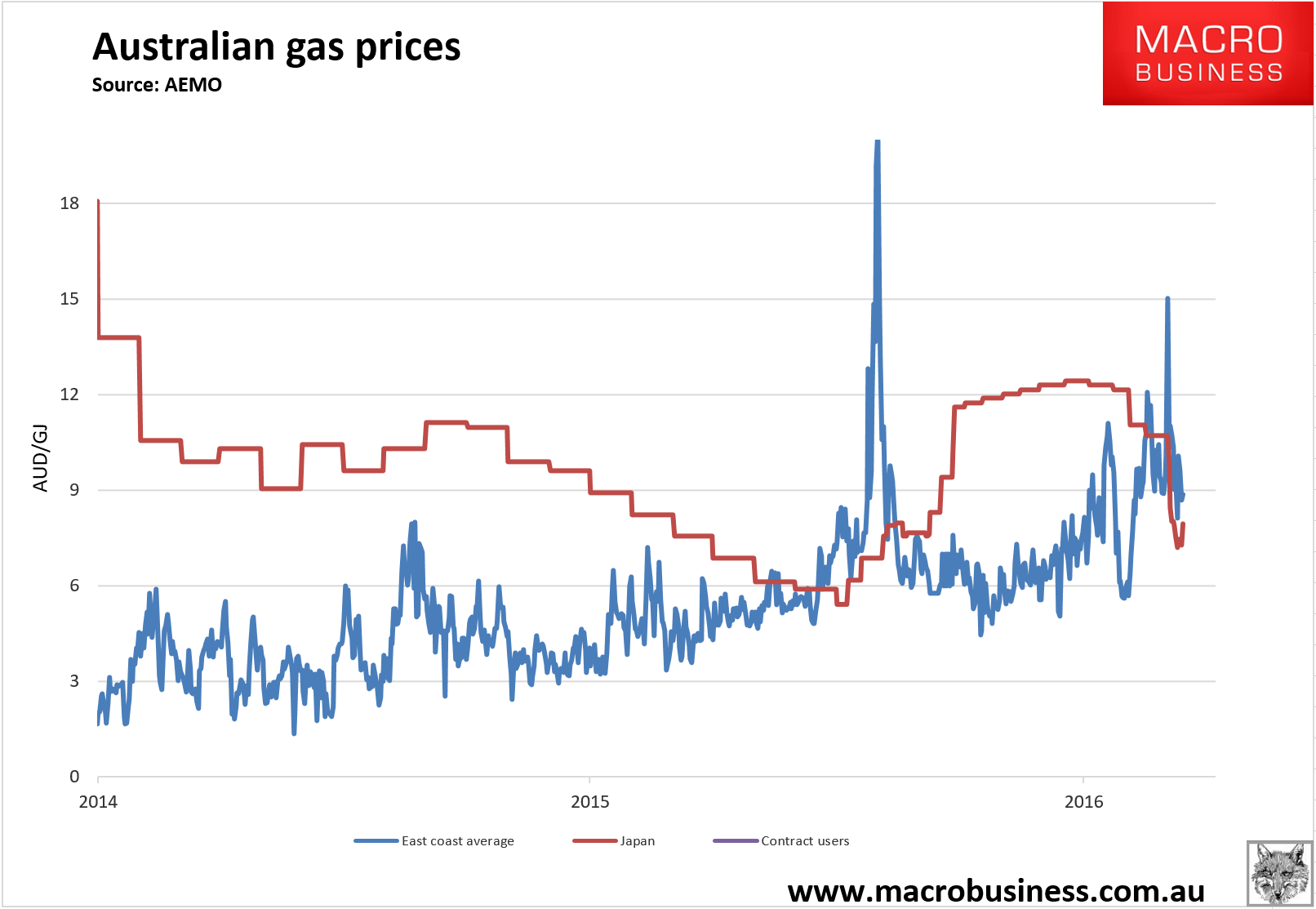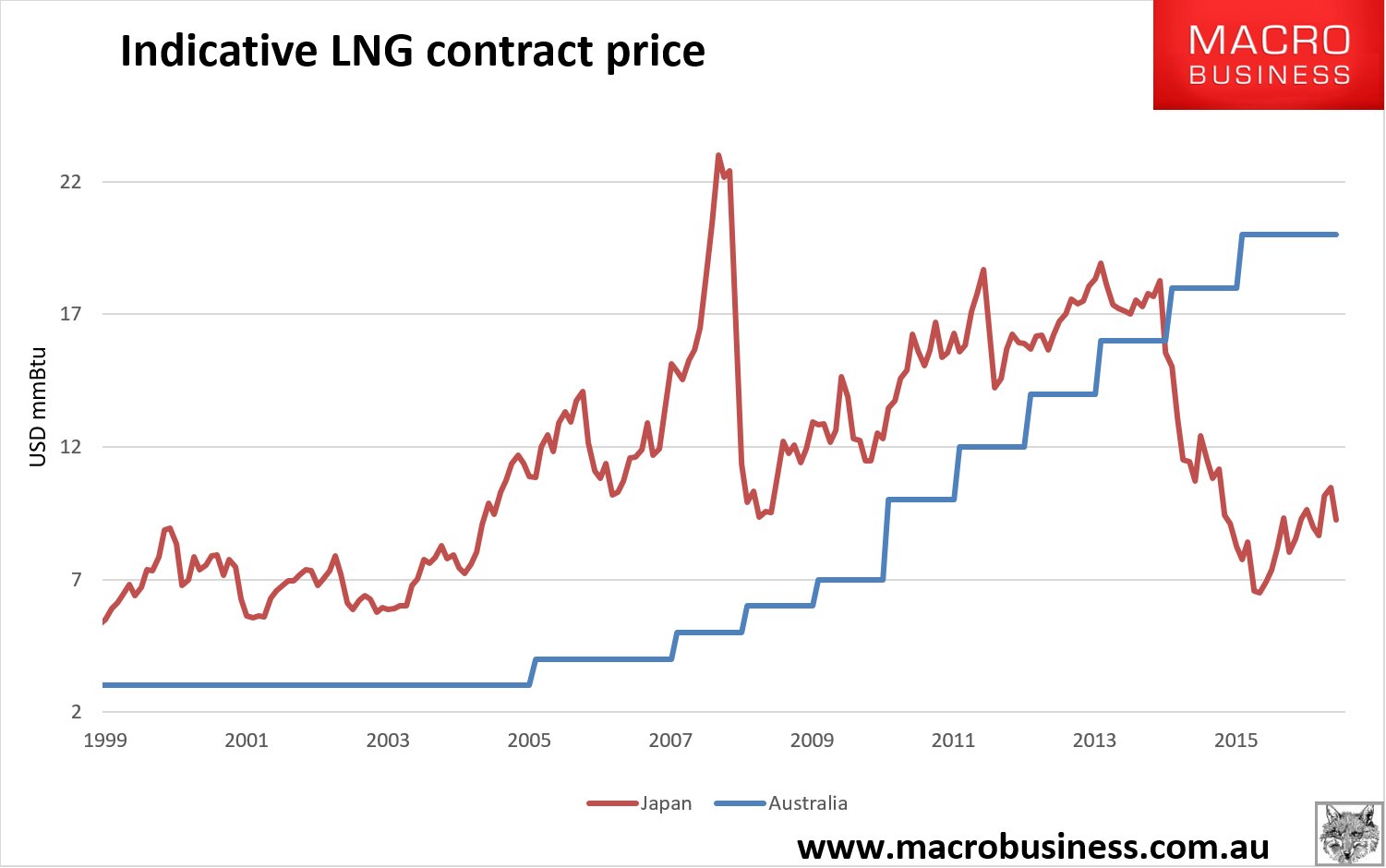More gas investment is flowing from the east coast gas cartel but it is more remarkable for its caution that its magnitude. Via the AFR:
Queensland’s almost forgotten international gas joint venture, Arrow Energy, has started work on a plan to throw $500 million at new onshore production in an initiative that demonstrates that Shell and its Chinese and Japanese partners in Australian petroleum are ready, willing and unusually able to respond to government demands that domestic needs should come first.
Arrow has started design and engineering (FEED) work on a proposal that would more than double gas produced from its Tipton gas project in the Surat Basin.
The opening phase of the expansion campaign would require drilling of at least 90 new coal seam gas wells in the Surat Basin and also require upgrades of recently expanded processing and gas-gathering capacity.
According to Arrow, the expansion would more than double current Tipton production to something better than 80 petajoules of gas. Given the domestic market presently burns about 700PJ a year, the Tipton expansion would introduce volumes equivalent to 5 per cent of local needs.
Let’s assume this gas is for the domestic market, there is really no way to know, and it puts 35Pj dent in a 200Pj shortage. It’s a start but that’s all. Given Arrow is squatting on something 10,000Pj it’s a bit of an insult frankly. We still need tough “use it or lose it” rules for this market urgently.
BHP and Exxon are also investing, via The Australian:
ExxonMobil has flagged a major phase of new investment in the big offshore Victorian gasfields it owns with BHP Billiton, saying that completion of the $5.5 billion Kipper Tuna Turrum project paves the way for “Bass Strait 2.0” amid surging domestic gas demand.
The strong language from Exxon Australia chairman Richard Owen about potential future investment in the nation’s most prolific and profitable oil and gas fields is likely to ease concerns about a coming east coast shortage and forecast Bass Strait decline. It comes as Macquarie eyes boosted Bass Strait free cash flow for Exxon and BHP by a combined $US400m a year because of rising east coast gas prices.
New investment would help Bass Strait’s Longford plant — the nation’s biggest domestic gas supplier, which can produce at about the same level as each of Queensland’s three export plants — maintain production, and potentially marginally increase it.
Hard to know what this will do to the market balance given it is really a play to prevent gas volumes falling.
Gas prices have eased a little on the spot market but remain above those in Japan:

Of course, the contact market remains a disaster:


